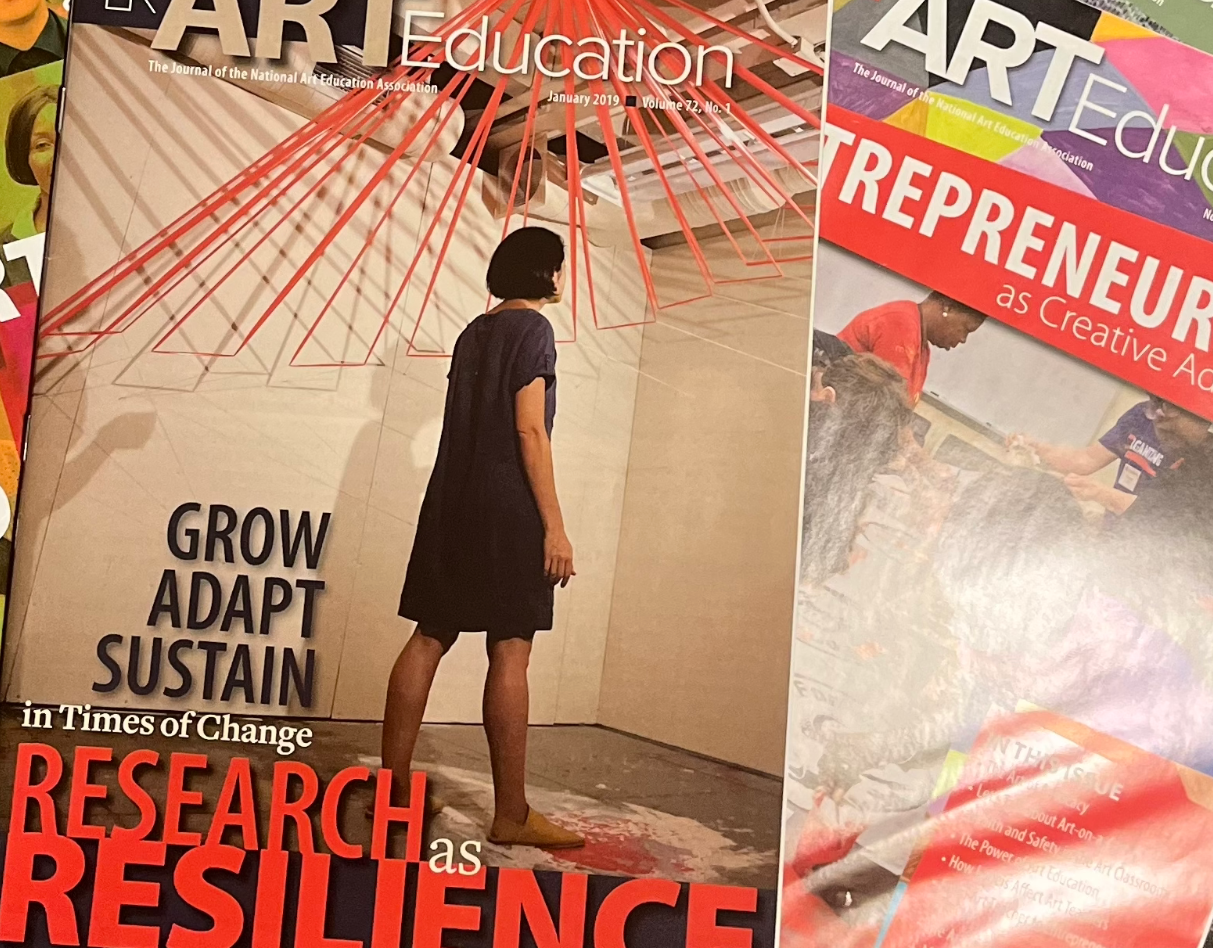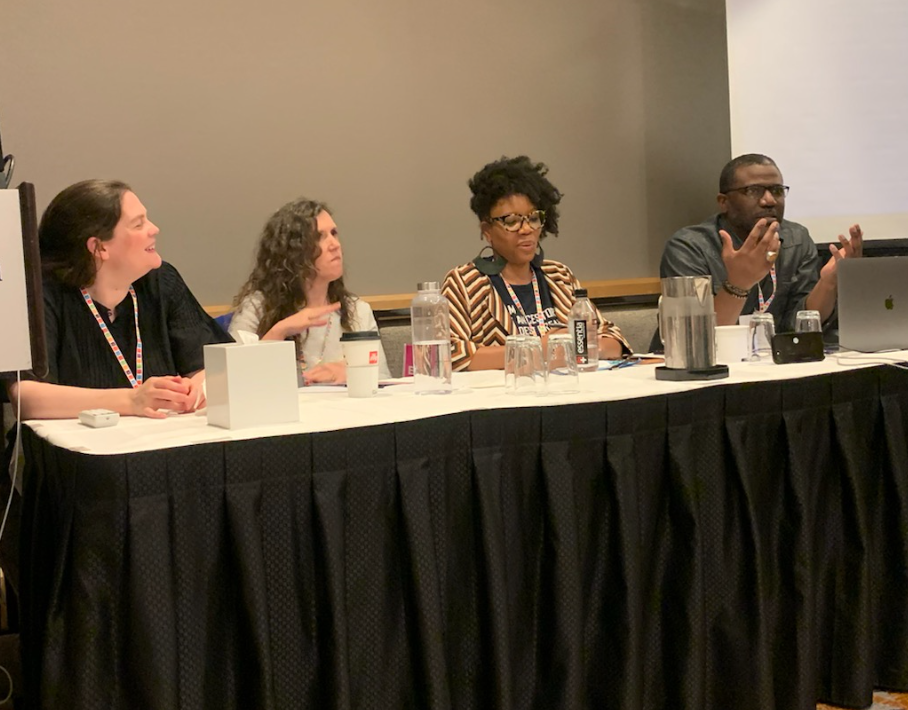Visual pedagogies: Concepts, Cases & Practices
The peer-reviewed sole-authored book chapter titled “Esculent identities: A spatial politics of be/longings in Black visuality” was published in Visual Pedagogies: Concepts, Cases & Practices (2023) Brill Publishing. This international collection presents theoretical, empirical and practice-led considerations of what can be envisioned as visual pedagogies, offering classic, creative, and contemporary re-workings of these paradigms. In complementary yet overlapping parts, this book explores understandings of visual pedagogies as learning with, through and/or about images, visual and digital environments, embodied performances and immersive experiences. As visual practices in academia gain momentum, the need to navigate visuality in ways that enhance sensibility and awareness of how/when/what we observe, analyze, criticize and reflect on in any given moment continues to grow.
In my chapter, I focus on the gestural as a means of visuality. Gestures are not just about what are visually proximal, but involve those fragments and traces of historical context that live outside the image – those traces that are alive within, through and beyond us. Visualities are about being able to empathize with the histories of relational bodies. Histories that are not only visually represented, but also those histories that hide. The gestural is fundamental to this conversation about being and longing as it aims to reveal something about the potential of how the gestural teaches. My questions and probes throughout the chapter are not only situated in the obvious realm of the relational, but are also critically concerned with gestural nuances of being and the onto-epistemological commitments that sustain being’s existence. How do things survive? I explore conceptual ideas of gesture as a way of considering how the politics of spatiality might generate implications for theorizing visual pedagogies, particularly about Black visualities as represented through art and cinema.
Herman, D. (2023). Esculent identities: A spatial politics of be/longings in Black visuality. In C. Cambre, E. Barromi-Perlman, & D. Herman (Eds.), Visual pedagogies: Concepts, Cases & Practices. Boston, MA: Brill Publishing.
The Palgrave Handbook of Race and the Arts in Education
In August 2018, I was the lead author in a co-authored peer-reviewed book chapter with Dr. Amelia (Amy) Kraehe titled “Toward a Counter-Visual Education: Cinema, Race, and the Reorientation of White Visuality,” published in the edited volume The Palgrave Handbook of Race and the Arts in Education. This book is the first edited volume to examine how race operates in and through the arts in education. As an interdisciplinary collection, the 33 chapters explore the ways in which music, visual art, theater, dance, and popular culture intertwine with racist ideologies and race-making.
Our chapter addresses how racial hegemony is instrumentalized through mass-mediated images by analyzing the film 12 Years a Slave and the spontaneous cell phone images that galvanized the Black Lives Matter movement. We propose new pedagogical strategies for a critical visual education that examines the racial dimensions of visual embodied perception and cultural production.
As a scholar researching Black visuality, my contributions included leading the analysis of the movie 12 Years a Slave and drawing insights from my work with the art education non-profit Preservation LINK, Inc., which emphasizes the cultural and pedagogical significance of visual literacy. Additionally, I maintained regular communication with my co-author to ensure a cohesive and comprehensive chapter and served as the corresponding author in communication with the editor responsible for our chapter. My responsibilities included coordinating revisions, securing permissions for images, and ensuring that our work aligned with the overarching goals of the edited volume.
Herman, D., & Kraehe, A. M. (2018). Toward a counter-visual education: Cinema, race, and the reorientation of White visuality. In A.M. Kraehe, R. Gaztambide-Fernandez, & B. S. Carpenter (Eds.), The Palgrave handbook of race and the arts in education. London, UK: Palgrave-Macmillan.
Pedagogies in the flesh: Case studies on the embodiment of sociocultural differences in education
My solo-authored peer-reviewed book chapter, titled “Compulsory Heterosexuality and the Queering of Southern Lines,” was published as part of the edited collection, Pedagogies in the Flesh: Case Studies on the Embodiment of Sociocultural Differences in Education. This book is a collection of vivid, theoretically informed descriptions of flashpoints––educational moments when the implicit sociocultural knowledge carried in the body becomes a salient feature of experience. These flashpoints ignite critical reflection and dialogue about the formation of the self, identity, and social inequality on the level of the preconscious body.
Herman, D. (2018). Compulsory heterosexuality and the queering of Southern lines. In S. Travis, A. M. Kraehe, E. Hood, & T. Lewis (Eds.), Pedagogies in the flesh: Case studies on the embodiment of sociocultural differences in education (pp. 127-132). London, UK: Palgrave-Macmillan.
Herman, D. (2018). Compulsory heterosexuality and the queering of Southern lines. In S. Travis, A. M. Kraehe, E. Hood, & T. Lewis (Eds.), Pedagogies in the flesh: Case studies on the embodiment of sociocultural differences in education (pp. 127-132). London, UK: Palgrave-Macmillan.

